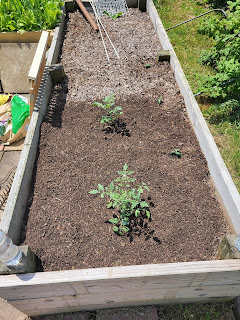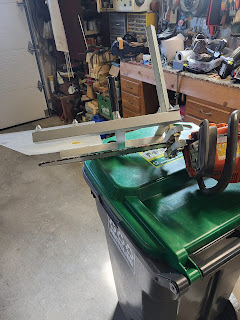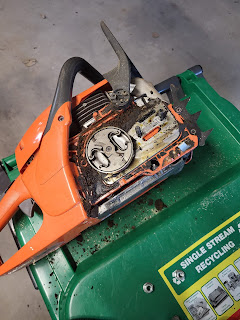I often end up with more beans than I can eat whether they are from the garden or from the store. Instead of letting them go to waste, I pickle them using leftover pickle juice from commercial pickles.
We often buy gourmet pickles from local venders and these come in all sorts of interesting flavors. After the pickles have been eaten, I store the unused, leftover juice in the refrigerator until I have some extra beans.
The first step is to clean and sterilize the canning jar. I usually use one pint jars for beans. While the jar is being sterilized in boiling water, I wash, sort, and size the beans, enough to tightly fill the jar. Make sure the beans are clean, select only young, firm, and unblemished beans, then cut them to length. You want the bean to be one half inch shorter than the inside of the jar height. This is to make sure all the bean is under the pickle brine when the jar is filled.
Next, I pour the pickle juice into a pan and bring it to a boil. Generally, the pickle juice is sterile but why take a chance. Boil it for five or six minutes.
While the pickle juice is boiling, take out your now sterilized canning jar from its boiling water and dump in all your trimmed green beans so that you can blanch them. I blanch the beans for four minutes. Blanching sterilizes the outside of the bean and slightly softens the texture of the pod.
While the beans are in the boiling water to blanch, fill a large mixing bowl with cold water and ice. This ice bath is used to stop the blanching process and chill the beans.
At the four minute mark, scoop out the beans and drop them into the ice water to cool down. Stir them around to ensure they all get cooled down to stop the blanching.
Once they are cooled down, you can start packing the canning jar with the beans. I hold the jar sideways so that the beans stack on top of each other as I place them in the jar. Once the jar is full, push down on the tops of the beans to make sure they are even at the top, about a half inch to an inch below the rim. Now, carefully pour in the boiling pickle juice until all the beans are covered. If there are air bubbles in the jar, tap the bottom of the jar or use a spoon or fork to move the beans around until the bubbles are released and rise to the top. Once the juice is in and the bubbles are gone, screw on the lid and ring until it is snug but not tight.
Place the now filled jar into the boiling water you used to blanch the beans and let it sit for six to eight minutes. This heats up the juice and air in the jar, expanding it.
Once the heating time is done, take the canning jar out of the boiling water, set it on some sort of insulated pad, like a hot pad or even a dish towel, and carefully tighten the lid until it is firmly seated. Let the jar sit at room temperature and as it cools down the liquid and the air in the jar will cool and contract, which forms a vacuum in the jar. At this time, the lid will slightly collapse and you will hear a metallic pop. If, after completely cooling, the lid isn't depressed and you can pop it by pushing down on its center, the jar didn't properly seal. You can still use this, but you'll have to store it in the refrigerator until you want to eat some beans. But if it sealed properly, you can store these in a cool, dry shelf area for many months.
I usually let this jar sit for at least a month or two to let the flavors sink into the beans. Once you open the jar, you need to then keep the jar in the fridge and try to eat them within a couple weeks.
This is a delicious way to store some excess green beans and use up leftover pickle juice that you already paid for anyway.























